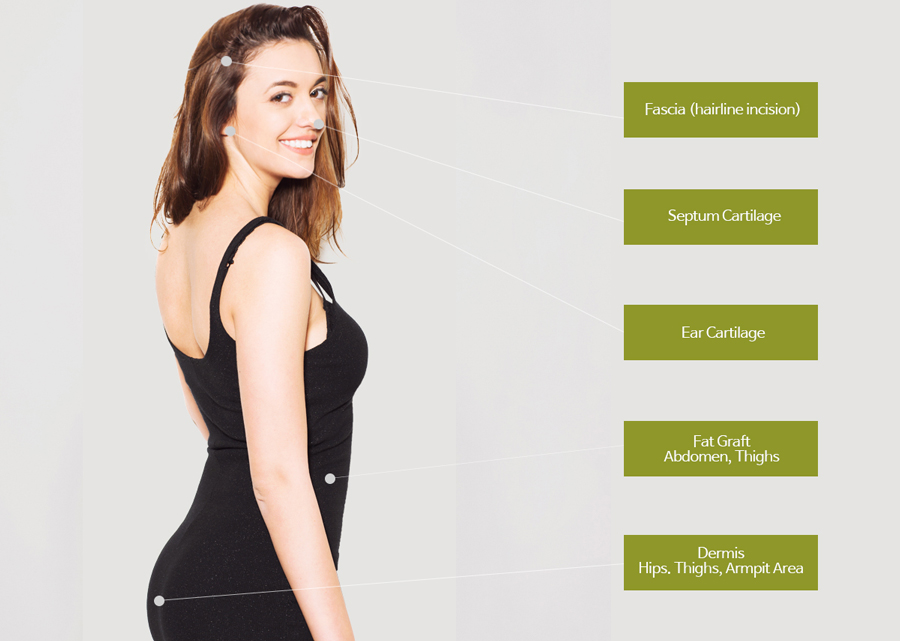
◆ Surgical information
Specialized Surgeon Dr. Jae Hoon Kim, Chief director Anesthesia . IV Sedation + Local Anesthesia Post operative treatment visits 3-4 times Stitch removal : 5-7 days after Recovery Care : Bruising and swelling care |
◆ What is Autologous Rhinoplasty?
|
It refers to rhinoplasty only with autologous materials to improve the bridge and tip when artificial implants such as silicon, goretex or alloderm are not a good option or unwanted. It is the most suitable method that can achieve low rate of complications with the most natural nasal shape since only autologous materials are used without foreign substances. |
◆ When Autologous Rhinoplasty is Needed
01. In case of patients who have really thin skin
02. When foreign body material or undissolvable filler remained inside the nose
03. In case of immediate surgery in a state of infection
04. After frequent foreign body reaction occured
05. When patients are against artificial implants
06. In case of severe internal nasal scar tissue and skin irregularity due to several surgeries
The most suitable surgical method is chosen according to the cause.
|
|
1. Ear Cartilage It can be harvested from behind the ear and it's |
2. Septum Cartilage Since septum cartilage can be harvested from inner side of the nose during rhinoplasty, it doesn't cause any scar or functional/structural problem. It is harder than ear cartilage so can provide stronger support. |
3. Costal (Rib) Cartilage Rib cartilage is commonly used when using other cartilages is hard due to several revisions. It's generally used for reconstructive and strut purpose and leaves 3-4cm incision line when 6th or 7th rib cartilage is harvested. April31 PS uses 10th rib cartilage which is convenient to be harvested allowing just 1-1.5cm incision which eventually fades away and becomes hard to notice. |
4. Dermis
'Dermofat Graft' means utilizing parts of skin tissue and fat layer together. It can be harvested from armpit area, thighs or buttocks to be grafted on the nasal bridge and tip. |
5. Fascia
|
6. Bone The bone is usually harvested from the skull, rib or pelvis. However, it is usually applied for reconstructive surgery due to deformity from accidents rather than cosmetic surgery since it is a relatively invasive surgery. |
7. Fat Graft It is usually harvested from abdomen or thighs for micro fat graft. Special solution is injected for the harvest of fat which will be precisely extracted by centrifugal separator for the grafting.
|
|
◆ Treatment Plan

01. Examine the nose condition, bone structure and soft tissue through 3D CT scanning |
02. Consult with Rhinoplasty Specialist Dr. Jae Hoon Kim |
03. Devise a surgery plan suitable for each patient |
04. Perform surgery and monitor recovery |







